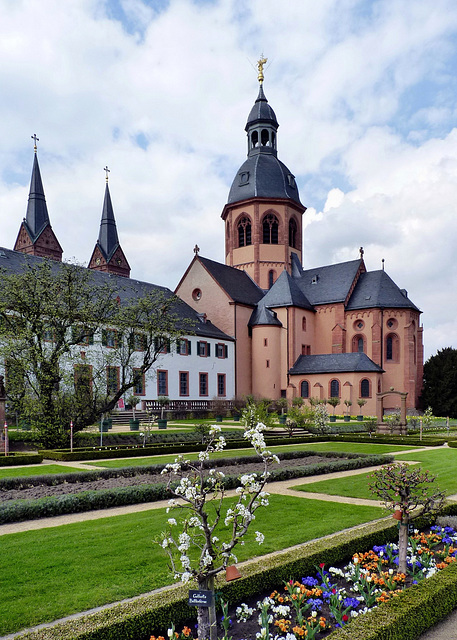Seligenstadt - Einhardsbasilika
Seligenstadt - Einhardsbasilika
Eichstaett - Cathedral
Eichstaett - Cathedral
Eichstaett - Cathedral
Eichstaett - Cathedral
Eichstaett - Cathedral
Breakfast in Bavaria
Tholbath - St. Leonhard
Tholbath - St. Leonhard
Tholbath - St. Leonhard
Tholbath - St. Leonhard
Tholbath - St. Leonhard
Tholbath - St. Leonhard
Moosburg - St. Kastulus
Moosburg - St. Kastulus
Moosburg - St. Kastulus
Moosburg - St. Kastulus
Moosburg - St. Kastulus
Moosburg - St. Kastulus
Moosburg - St. Kastulus
Moosburg - St. Kastulus
Moosburg - St. Kastulus
Seligenstadt - Einhardsbasilika
Seligenstadt - Einhardsbasilika
Michelstadt
Michelstadt - Einhardsbasilika
Michelstadt - Einhardsbasilika
Michelstadt - Einhardsbasilika
Michelstadt - Einhardsbasilika
Kloster Eberbach / Eberbach Abbey
Kloster Eberbach / Eberbach Abbey
Kloster Eberbach / Eberbach Abbey
Kloster Eberbach / Eberbach Abbey
Kloster Eberbach / Eberbach Abbey
Kloster Eberbach / Eberbach Abbey
Kloster Eberbach / Eberbach Abbey
Kloster Eberbach / Eberbach Abbey
Kloster Eberbach / Eberbach Abbey
Kloster Eberbach / Eberbach Abbey
Kloster Eberbach / Eberbach Abbey
Kloster Eberbach / Eberbach Abbey
Kloster Eberbach / Eberbach Abbey
Linden - St.-Peters
Linden - St.-Peters
Location
Lat, Lng:
You can copy the above to your favourite mapping app.
Address: unknown
You can copy the above to your favourite mapping app.
Address: unknown
See also...
Keywords
Authorizations, license
-
Visible by: Everyone -
All rights reserved
-
125 visits
Seligenstadt - Einhardsbasilika


The official name if this church is "Basilika St. Marcellinus and Petrus" but very often it is called Einhardbasilika, just like the barn-like building I had just visited near Michelstadt, two days ago. I had not planned to visit Seligenstadt, but as Einhard had caught my attention, I decided to do this detour.
Einhard a political adviser for Charlemagne, private secretary of Charles´ son Louis the Pious, had decided to found an abbey near Michelstadt, where a property was given to him by Louis. Einhard had sent his servant Ratleik to Rome, who then abstracted two holy relics from the catacombs: Saint Marcellinus and Saint Peter (aka "Petrus Exorcista" = Peter, the exorcist).
After their arrival in Michelstadt, the relics had signaled, that they did not like the place at all. So Einhard moved the relics to a place he owned 50kms further north named Mulinheim, where he again founded a monastery, and had a large basilica built (~ 830). Saint Marcellinus and Saint Peter liked the new place near the river Main - and the town changed it´s name to Seligenstadt (= "Blessed Ones’ Town").
The abbey in Seligenstadt flourished, as well as the settlement. Frederick I Barbarossa granted town privileges and had a palace built here. During the Thirty Years' War contributions had to be paid to the Swedish crown, what did not prevent the troops from looting town and abbey. The abbey got rebuilt later in a baroque style and dissolved finally in 1803. The abbey church serves as a parish church since 1812.
All around the abbey meticulous maintained gardens.
Einhard a political adviser for Charlemagne, private secretary of Charles´ son Louis the Pious, had decided to found an abbey near Michelstadt, where a property was given to him by Louis. Einhard had sent his servant Ratleik to Rome, who then abstracted two holy relics from the catacombs: Saint Marcellinus and Saint Peter (aka "Petrus Exorcista" = Peter, the exorcist).
After their arrival in Michelstadt, the relics had signaled, that they did not like the place at all. So Einhard moved the relics to a place he owned 50kms further north named Mulinheim, where he again founded a monastery, and had a large basilica built (~ 830). Saint Marcellinus and Saint Peter liked the new place near the river Main - and the town changed it´s name to Seligenstadt (= "Blessed Ones’ Town").
The abbey in Seligenstadt flourished, as well as the settlement. Frederick I Barbarossa granted town privileges and had a palace built here. During the Thirty Years' War contributions had to be paid to the Swedish crown, what did not prevent the troops from looting town and abbey. The abbey got rebuilt later in a baroque style and dissolved finally in 1803. The abbey church serves as a parish church since 1812.
All around the abbey meticulous maintained gardens.
- Keyboard shortcuts:
Jump to top
RSS feed- Latest comments - Subscribe to the comment feeds of this photo
- ipernity © 2007-2025
- Help & Contact
|
Club news
|
About ipernity
|
History |
ipernity Club & Prices |
Guide of good conduct
Donate | Group guidelines | Privacy policy | Terms of use | Statutes | In memoria -
Facebook
Twitter

Sign-in to write a comment.